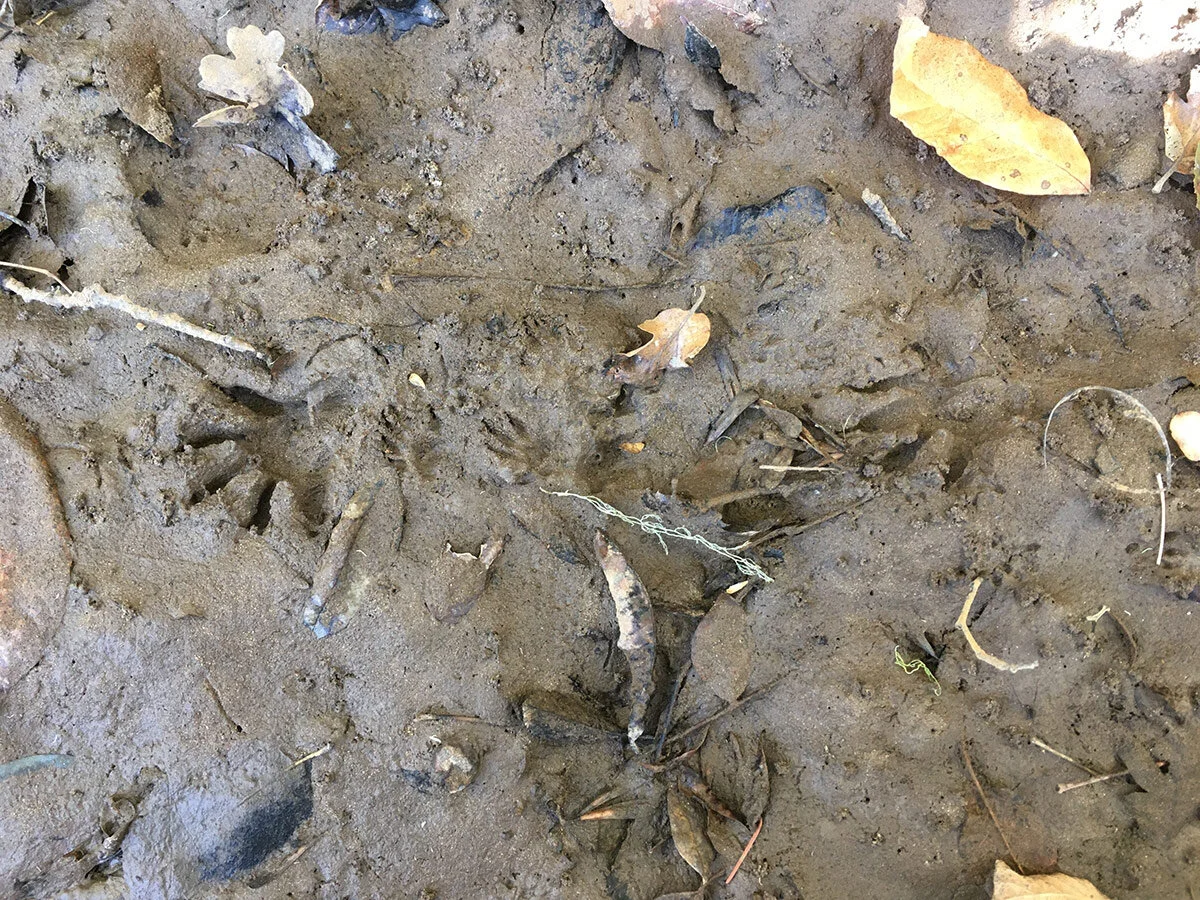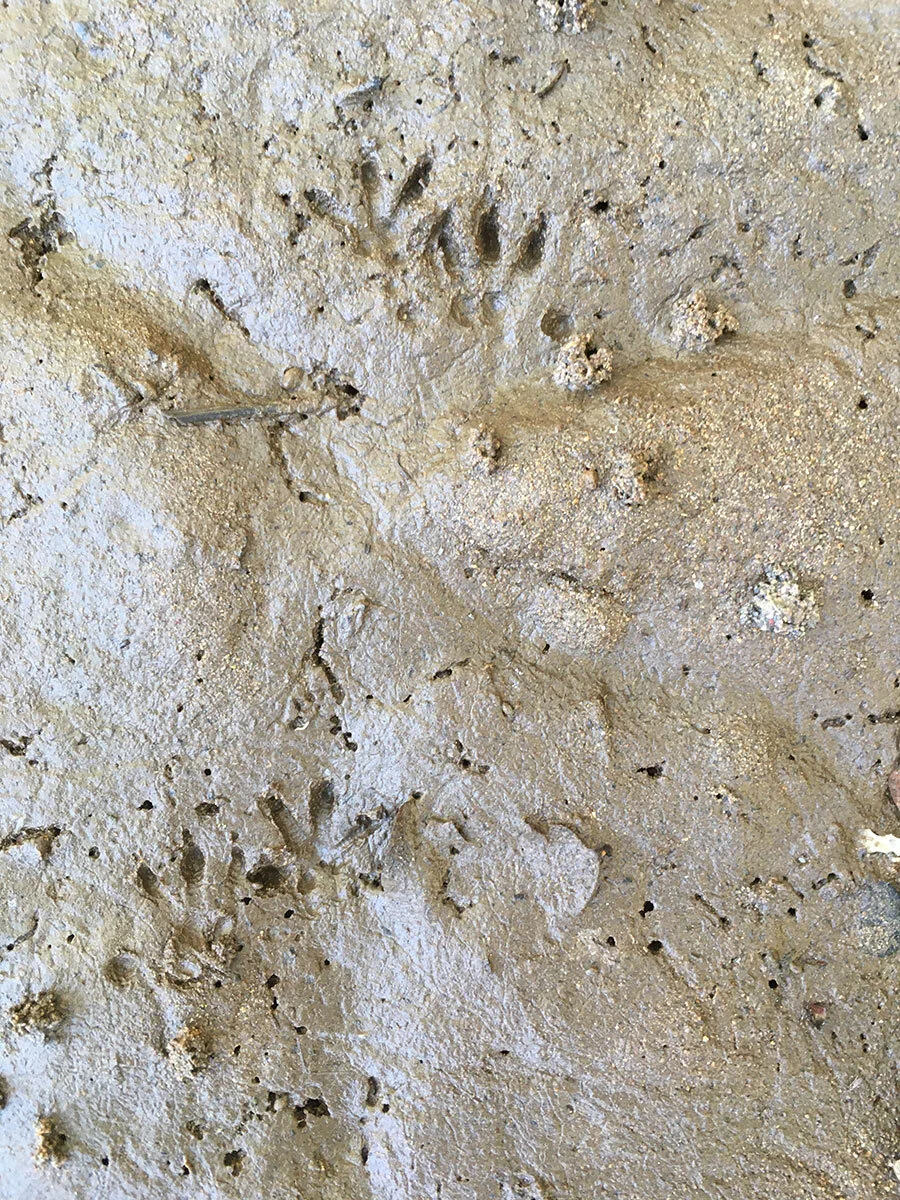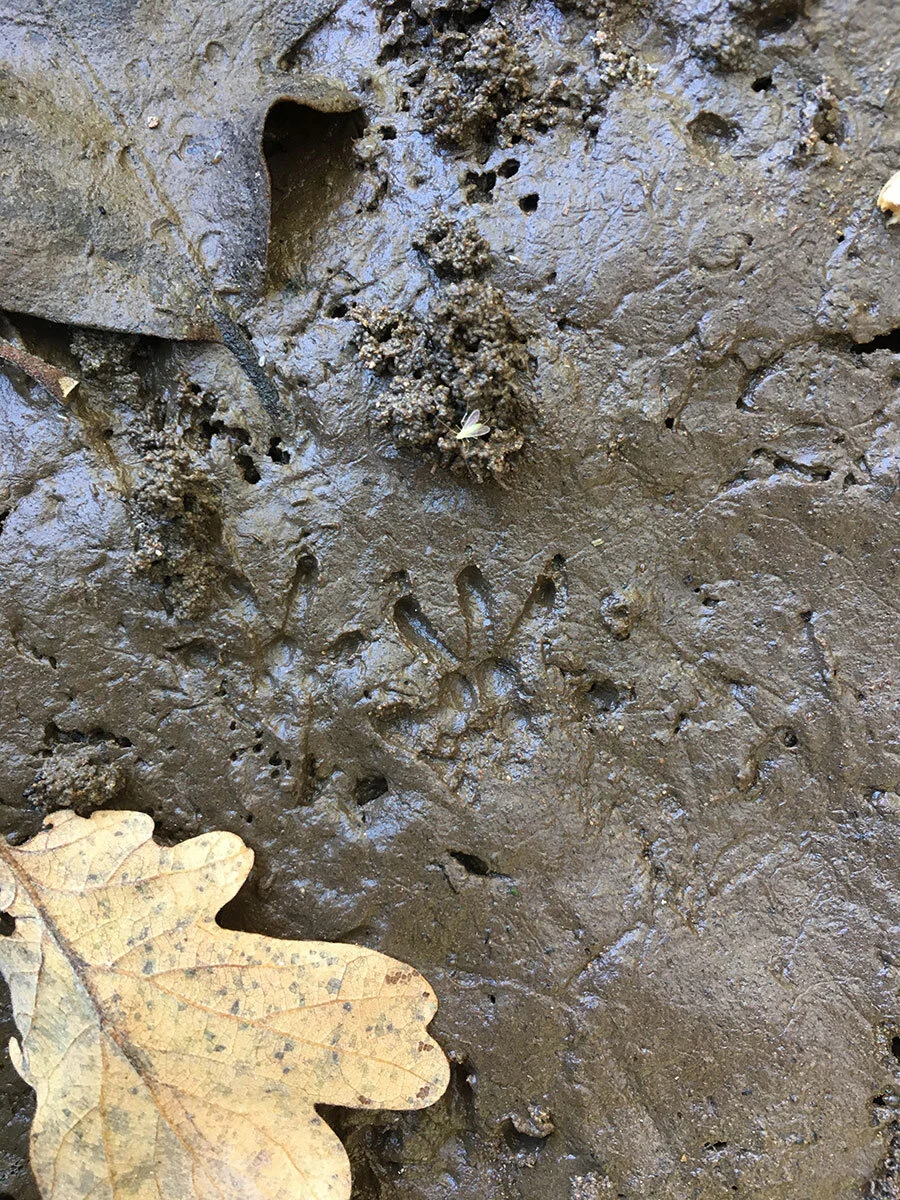Animals are bare footed with mud squishing between their toes!
One of the benefits of the rain is that it creates an excellent canvas of mud to capture the tracks of animals. Even though the maker of the tracks is gone, they still emanate life and mystery. Animals are in intimate communication with the earth. I imagine that immense knowledge of the landscape is absorbed through their direct connection with the ground. A track is a gift. It teaches me to also learn and understand life through my sense of touch. It reminds me that we are sharing this world with other creatures.














